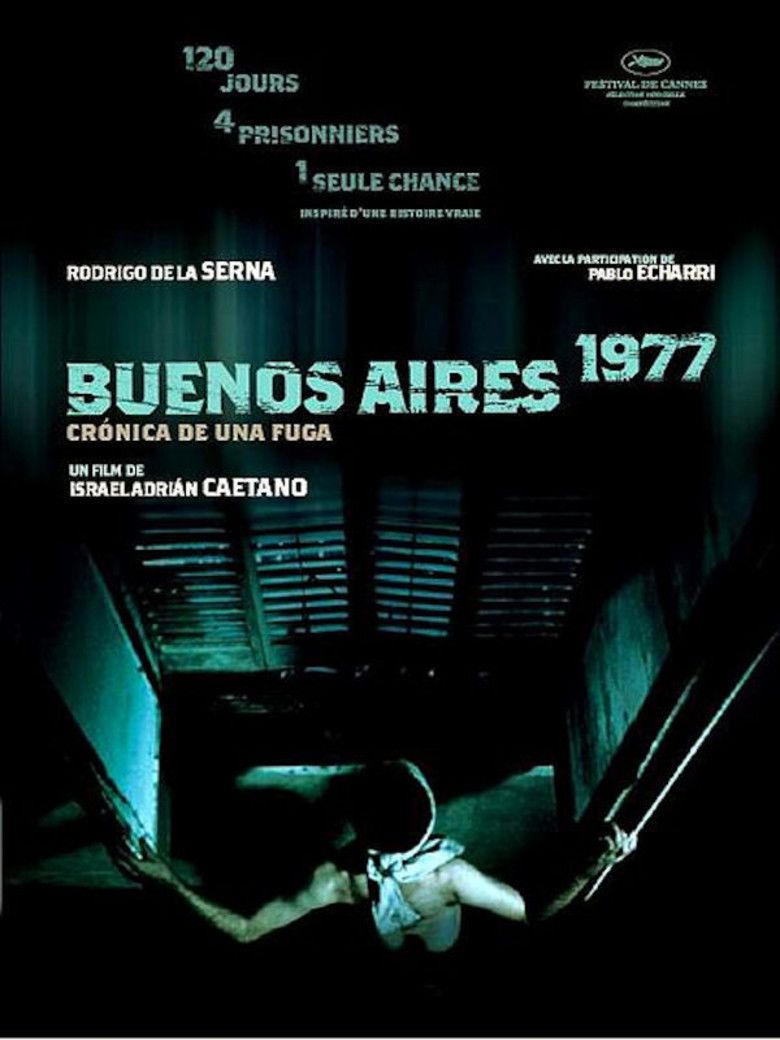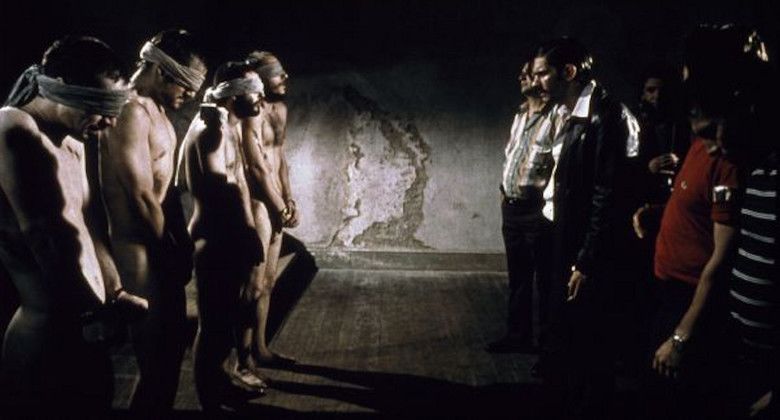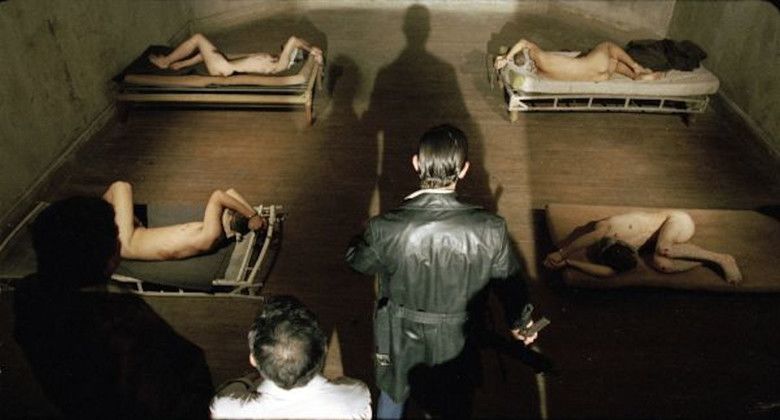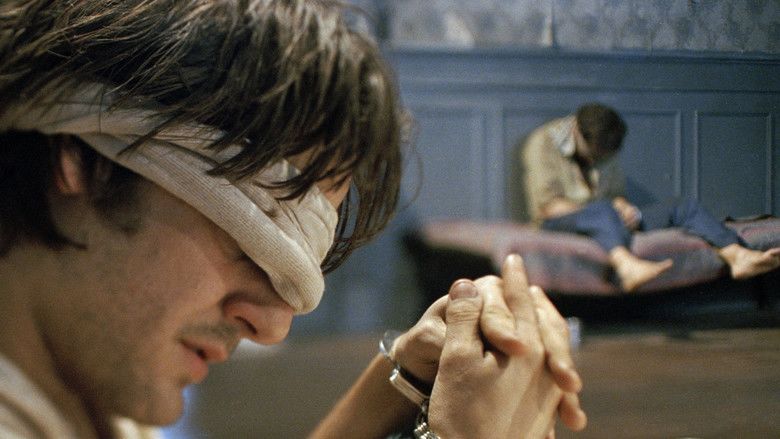Chronicle of an Escape
7.4 /10 1 Votes
Director Israel Adrian Caetano Country Argentina | 7.2/10 IMDb Duration | |||||||||||||||||||||||||||||||||
 | ||||||||||||||||||||||||||||||||||
Release date March 24, 2006 (2006-03-24) Writer Adrian Caetano, Esteban Student, Julian Loyola, Claudio Tamburrini (book) | ||||||||||||||||||||||||||||||||||
Chronicle of an escape
Chronicle of an Escape (Spanish: Crónica de una fuga) is a 2006 Argentine film, directed by Israel Adrián Caetano. The screenplay is written by Caetano, Esteban Student, and Julian Loyola, based on the autobiographical Pase libre – la fuga de la Mansion Seré written by Claudio Tamburrini. The movie is also known as Buenos Aires, 1977. The motion picture was produced by Oscar Kramer and Hugo Sigman, and stars Rodrigo de la Serna, Pablo Echarri, Nazareno Casero, and others.
Contents
- Chronicle of an escape
- Kramer sigman films chronicle of an escape
- Plot
- Cast
- Basis of film
- Production
- Critical response
- Accolades
- Distribution
- References

The winner of the Silver Condor Award for Best Film, it was Argentina's entry for the 2007 Golden Globes Awards for the Best Foreign Language Film, and director Israel Adrián Caetano was nominated at the 2006 Cannes Film Festival for a Golden Palm.

The film tells the true story of four men who narrowly escaped death at the hands of a military death squad during the Argentine Dirty War in the 1970s.

Kramer sigman films chronicle of an escape
Plot

In 1977, Claudio Tamburrini (Rodrigo de la Serna) was a goalie for a minor league soccer team when he was kidnapped by members of the Argentine secret military police. He is taken to a detention center known as Sere Mansion: an old dilapidated house in the suburban neighborhood of Morón on the suspicion he is an anti-government terrorist.
Tamburrini is tortured by his jailers frequently. Yet, they look for information he does not have because he is not a political activist and never was. Tamburrini expects to be killed by the ruthless guards at any time. After four months of imprisonment, and many sessions of torture, Tamburrini and his fellow captives Guillermo (Nazareno Casero), Vasco and another man dive out a window during a rainstorm. The four, naked and with nothing but their senses, begin a desperate flight to freedom.
Cast
Basis of film
The film is based on a real political event that took place in Argentina after Jorge Rafael Videla's reactionary military junta assumed power on March 24, 1976. During the junta's rule the parliament was suspended, unions, political parties and provincial governments were banned, and in what became known as the Dirty War between 9,000 and 30,000 people deemed left-wing "subversives" disappeared.
The film is about one such instance: the kidnapping of Claudio Tamburrini, a goalkeeper of a B-league soccer/fútbol team, who's taken to a clandestine detention center and tortured. He escaped and wrote Pase libre – la fuga de la Mansion Seré, a harrowing account of his experience.
Before the production began director Israel Adrián Caetano traveled to meet Tamburrini in Stockholm, where he now lives, to learn the truth about the event. There he also met Guillermo Fernández, the man who initiated the breakout. Both former prisoners helped Caetano and the screenwriters stick closely to the theme of the film - survival.
Production
The production was difficult according to Caetano. He said, "The filming was an endless challenge: shooting almost entirely within four walls, trusting the outcome to the acting, the framing, and the light. It was not always easy to generate fear, paranoia, and neurosis from this prison. Our challenge was how to re-create the madness these prisoners endured."
Critical response
The Hollywood Reporter's John DeFore thinks American audiences will like the thriller and its pace, especially after the men escape in the rain. He believes that Chronicle of an Escape will give American audiences "an icky feeling" when they view the "fact-based Argentine story through the stylized lens of a horror film. Laced with dread that builds to a thoroughly gripping third act, it should do well with art house audiences who like their history lessons to come with a shot of adrenaline."
Critic Deborah Young, writing for Variety magazine, generally liked the film yet felt the film's atonal score was at times irritating. She wrote, "[F]orceful acting plays a key role in giving the story credibility, with De La Serna and Casero lighting the way." She also says the film "feels hollow at the core, leaving a feeling of lingering disappointment over a missed opportunity to probe recent history."
Critic Clark Collis liked the film and wrote, "Chronicle of an Escape's premise may remind you of Sly Stallone's enjoyably preposterous 1981 soccer/incarceration flick, Victory, but this true-story-based movie scores in a different way...The result is blessed with great performances; director Israel Adrián Caetano lets events speak — and plead and weep — for themselves."
Stephen Holden, critic for The New York Times, discussed the film from today's political perspective in the United States. He wrote, "Despite its restraint, Chronicle of an Escape is deeply unsettling. Although the events it depicts happened 30 years ago in South America, it inevitably triggers anguished thoughts of Abu Ghraib, Guantánamo Bay and extraordinary rendition...But as a suspenseful drama of captivity and escape, the movie is a carefully paced, persuasively acted thriller. Its first two-thirds observe Claudio's four-month internment, during which he becomes resigned to the idea that he will be killed. Unlike the other captives, he does not belong to a subversive group; midway through the film he discovers to his fury that an acquaintance and fellow prisoner, while under torture, lied and named him as the owner of a mimeograph machine that printed antigovernment leaflets. The message is explicit: Torture may make people talk, but they’ll say anything to avoid further abuse."
Critic Jan Stuart echoed Stephen Holden and wrote, "If there is anything more disturbing than any of the tortures glimpsed in the film, it is turning on the evening news afterward and being reminded that the use of such hardball practices are still, in the minds of some, a subject for debate."
The review aggregator Rotten Tomatoes reported that 60% of critics gave the film a positive review, based on fifteen reviews.
Accolades
Distribution
The film first opened in Argentina on March 24, 2006.
The film was shown at various film festivals, including: the 2006 Cannes Film Festival, France; the Toronto International Film Festival, Canada; the Toulouse Latin America Film Festival, France; the Espoo Ciné International Film Festival, Finland; and others.
In the United States it was featured at the Austin Film Festival in Texas on October 26, 2006.
References
Chronicle of an Escape WikipediaChronicle of an Escape IMDb Chronicle of an Escape themoviedb.org
